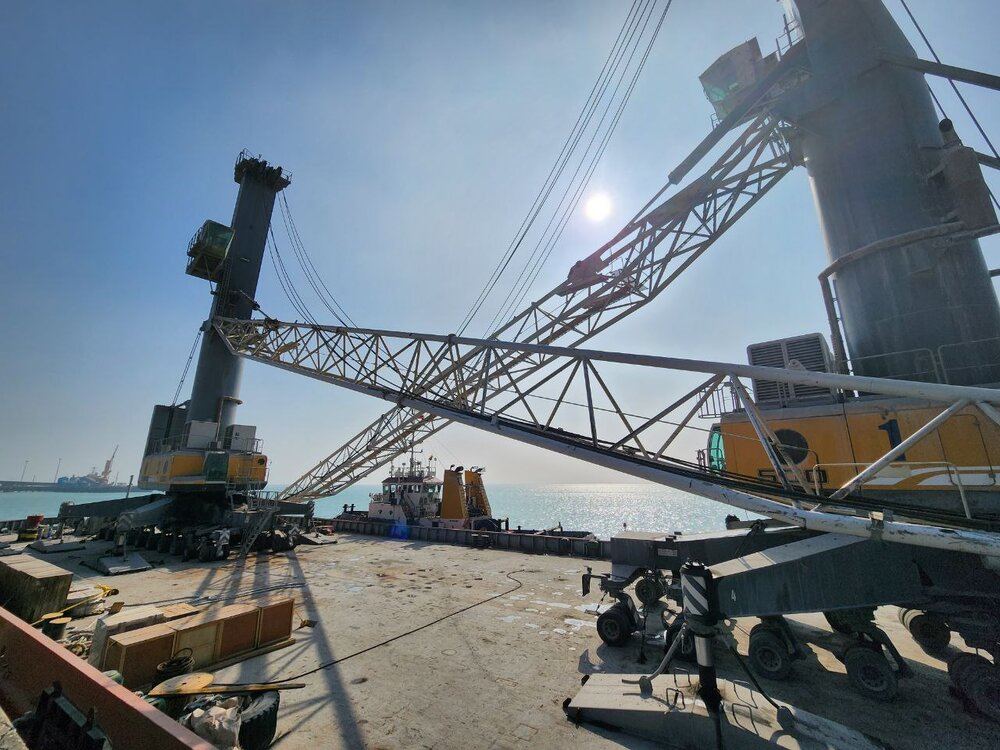Khuzestan ports in full swing

AHVAZ – With around 1,186 kilometers of shoreline, 300 kilometers of the sea border, 746 kilometers of maritime waterways, and 34 kilometers length of commercial and fishing docks, the southwestern Khuzestan province is full of capacity for increasing the country’s share of regional and global trade.
The seven ports of the province, namely Imam Khomeini, Khorramshahr, Abadan, Sajafi, Shadegan, Choebdeh, and Arvandkenar, have a total nominal capacity of more than 70 million tons per year, with Imam Khomeini Port holding the lion’s share of 60 million tons.
Some 13,000 individuals are working in the provincial ports which have a total population of 917,000 approximately.

The ports enjoy the advantage of being situated in the vicinity of the country’s largest petrochemical special economic zones and the second hub of the steel industry, having the largest capacity for loading and unloading basic commodities, and having the capacity for transiting and transshipping goods to Iraq, Turkey, and the Caucasus.
Some 40 docks with a total length of 7 kilometers and vast warehouses with an annual capacity of 29 million tons are some other unique features of the ports that are equipped with 1,192 vessels with a capacity to carry 34 million tons of cargo.
For the purpose of promoting maritime tourism, studies commenced in 2019 for building 8 docks at Imam Khomeini port with an estimated cost of 1,200 billion rials (some $3 million) and building tourism docks at Abadan and Shadegan ports costing 3.5 billion rials.
The port, according to the latest statistics, has a total loading and unloading capacity of around 34 million tons of goods including basic commodities, oil products, mining, and chemical products, and general cargo.
The port’s basic commodity warehouses currently hold some 5.7 million tons of wheat, corn, barley, oil seeds, sugar, rice, and edible oil.
Khorramshahr port is situated at the Arvand free trade and an industrial zone with the advantage of neighboring Iraq and Kuwait.
Abadan port is situated near Qatar, Kuwait, and Iraq. It is equipped with unique infrastructures for passenger shipment to Iraq and Kuwait. The port also enjoys appropriate facilities for exporting fish and shrimp, as well as agricultural and industrial goods.
Restarting the export of Abadan refinery products after 40 years, launching a passenger terminal for transferring people to Iraq, and creating a joint water border with Iraq are among the notable development projects.

Abadan is equipped with 7 docks with a total length of 450 meters and has a warehousing area of around 30,000 square meters.
Arvandkenar port is situated at the nearest distance to a number of ports in Kuwait and Iraq and is most appropriate for exporting fish and agricultural products. It has also equipped with suitable infrastructure for exporting construction materials.
A dock with a capacity of 1,000 tons, and warehouse with an area of 2,000 square meters, and an access road with a length of 3 kilometers are being built in the port.
Choebdeh is the most active port in the field of exporting livestock. It is situated near Kuwait and Iraq and has the advantage of transferring passengers to Iraq and Kuwait. The port is also equipped with infrastructure for exporting construction materials.
The port enjoys 3 docks with a total length of 206 meters and a warehousing area of 24,000 square meters. Some 1,000 billion rials worth of development projects is underway.
And the last but not least, Shadegan is an important port in terms of local trade. The port is equipped with infrastructures for maritime tourism and is appropriate for exporting fish as well as agricultural products and construction materials.
Some 700 billion rials worth of development projects is underway, including building a tourism dock and launching an optical fiber network.
In addition to the abovementioned ports, feasibility studies are underway for establishing the giant port of Khalij-e Fars (Persian Gulf) which is projected to be able to anchor large container ships and will compete with key ports in the region to gain a greater share of the regional trade.
Leave a Comment